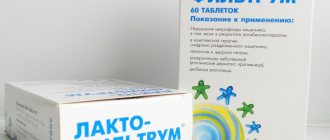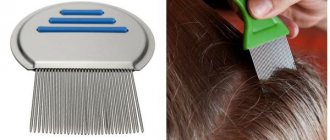Noopept is a neurometabolic stimulant that has a positive effect on psychophysiological processes. It is used to eliminate complications of head trauma, concussion, cerebrovascular pathology, and neuropsychic weakness. Noopept has various analogues that have a similar effect: they eliminate disorders of memory, attention and other higher brain functions.
You should not take Noopept if:
- liver and kidney dysfunction;
- pregnancy;
- during lactation;
- minors;
- lactase deficiency, hypolactasia, glucose-galactose malabsorption;
- individual intolerance to the components of the drug.
The active ingredient of the drug is N-phenylacetyl-L-prolylglycine ethyl ester. The medication is administered orally in the morning and afternoon, 10 mg. The duration of therapy with Noopept is 1.5-3 months.
Pharmacodynamics
Noopept® has nootropic and neuroprotective properties. Improves learning ability and memory, acting on all phases of processing: initial information processing, consolidation, retrieval. Prevents the development of amnesia caused by electric shock, blockade of central cholinergic structures, glutamatergic receptor systems, and deprivation of the paradoxical phase of sleep.
The neuroprotective (protective) effect of the drug Noopept® is manifested in increasing the resistance of brain tissue to damaging influences (trauma, hypoxia, electroconvulsive, toxic) and reducing the degree of damage to brain neurons. The drug reduces the volume of the lesion in a thrombotic stroke model and prevents the death of neurons in cultured tissue of the cerebral cortex and cerebellum exposed to neurotoxic concentrations of glutamate and free radical oxygen.
Noopept® has an antioxidant effect, blocks voltage-gated calcium channels in neurons, weakening the neurotoxic effect of excess calcium, improves the rheological properties of blood, having antiaggregation, fibrinolytic, and anticoagulant properties.
The nootropic effect of the drug is associated with the formation of cycloprolylglycine, which is similar in structure to the endogenous cyclic dipeptide, which has antiamnestic activity, as well as the presence of a choline-positive effect.
Noopept® increases the amplitude of the transcallosal response, facilitating associative connections between the cerebral hemispheres at the level of cortical structures. Helps restore memory and other cognitive functions impaired as a result of damaging influences - brain injury, local and global ischemia, prenatal damage (alcohol, hypoxia).
The therapeutic effect of the drug in patients with organic disorders of the central nervous system manifests itself starting from 5–7 days of treatment. Initially, the anxiolytic and mild stimulating effects present in the spectrum of activity of the drug Noopept® are realized, manifested in the reduction or disappearance of anxiety, increased irritability, affective lability, and sleep disturbances. After 14–20 days of therapy, a positive effect of the drug on cognitive functions, parameters of attention and memory is revealed.
Noopept® has a vegetative-normalizing effect, helps reduce headaches, orthostatic disorders, and tachycardia.
When discontinuing the drug, no withdrawal syndrome is observed. Does not have a damaging effect on internal organs; does not lead to changes in the cellular composition of the blood and biochemical parameters of blood and urine; does not have immunotoxic, teratogenic effects, does not exhibit mutagenic properties.
Indications
Noopept is indicated for a fairly large number of conditions:
- impairments of cognitive functions of various origins;
- emotional-volitional disorders (including in the elderly);
- consequences of traumatic brain injury (brain contusion, diffuse axonal damage);
- post-concussion syndrome;
- discirculatory encephalopathy, encephalopathy of combined genesis (with the presence of a vascular component);
- asthenia;
- decrease in intellectual activity of various origins.
Pharmacokinetics
N-phenylacetyl-L-prolylglycine ethyl ester, absorbed in the gastrointestinal tract, enters the systemic circulation unchanged, penetrates the BBB, and is determined in the brain in higher concentrations than in the blood. Tmax averages 15 minutes. T1/2 from blood plasma - 0.38 hours. Partially stored unchanged, partially metabolized with the formation of phenylacetic acid, phenylacetylproline and cycloprolylglycine. It has high relative bioavailability (99.7%), does not accumulate in the body, and does not cause drug dependence.
Cost of the drug and its analogues
Noopept is a relatively inexpensive drug; its cost may vary depending on the dosage, the number of tablets in the package, region and pharmacy.
Average cost of Noopept and its analogues in Russian pharmacies:
| A drug | Release form, quantity | Price in rubles |
| Noopept | Tablets 10 mg, No. 50 | 344 |
| Vinpocetine | Ampoules 5 mg/ml, No. 10 Tablets 5 mg, No. 50 Tablets 10 mg, No. 30 | 47 48 91 |
| Piracetam | Tablets 200 mg, No. 60 Capsules 400 mg, No. 20 20% solution in ampoules 5 ml, No. 10 | 27 30 30 |
| Vinpotropil | Capsules 5+400, No. 30 Tablets 10+800, No. 60 | 158 344 |
| Nootropil | Tablets 1200 mg, No. 20 Tablets 800 mg, No. 30 Ampoules 5 ml, No. 12 | 255 277 250 |
| Aminalon | Tablets 250 mg, No. 50 | 141 |
| Glycine | Tablets 100 mg, No. 50 Tablets 110 mg, No. 50 Tablets 250 mg, No. 20 | 33 42 43 |
| Tanakan | Tablets 40 mg, No. 30 | 542 |
| Divaza | Tablets 100 mg, No. 100 | 289 |
| Bilobil | Capsules 80 mg, No. 20 Capsules 120 mg, No. 20 | 301 447 |
| Cortexin | Lyophilisate 10 mg/5 ml, No. 10 | 1288 |
The cheapest analogues of Noopept are Piracetam, Glycine and Vinpocetine. Their cost does not exceed 50 rubles. However, you cannot replace one drug with another on your own, as this can negatively affect your health.
Cheap analogues of Noopept
There are cheaper drugs - substitutes for Noopept. These medications are produced by both foreign and domestic manufacturers.
Vinpocetine
Vinpocetine pilyule_nervi-422 is a domestic psychoanaleptic based on vinpocetine, which facilitates the movement of blood through the vessels of the brain. The drug has a number of positive effects on the body: it reduces inflammation, neutralizes the negative effects of oxidants, reduces the intensity of blood flow, relieves muscle cramps, and normalizes metabolism. The active substance is a selective inhibitor of phosphodiesterase, which causes a vasodilating effect on brain vessels. After using the drug, there is a slight decrease in blood pressure.
The drug is taken orally at a dose of 5-10 mg three times a day. Injections are used for acute conditions. The drug is prescribed to relieve symptoms when:
- disorders associated with brain injury;
- diseases of the choroid;
- vascular hearing loss;
- non-purulent disease of the inner ear, vestibular vertigo;
- VSD during menopause.
The medication differs from Noopept in a minor list of contraindications. Tablets should not be taken during pregnancy and lactation, and injections are not prescribed to patients with organic and functional myocardial damage and arrhythmia. The medicine is also not prescribed for children.
S.I. Gavrilova, I.V. Kolykhalov, Ya.B. Fedorova, Ya.B. Kalyn, N.D. Selezneva
Scientific Center for Mental Health of the Russian Academy of Medical Sciences, Moscow
Summary The development of methods for preventive therapy for Alzheimer's disease (AD) is gaining increasing scientific and practical significance. An open-label clinical study examined the safety and therapeutic efficacy of Noopept in 20 elderly patients aged 50 to 80 years with amnestic MCI syndrome at risk for AD. Evaluation of the effectiveness of therapy using the CGI scale showed that in the studied group of patients, a positive therapeutic effect was observed in 70% of patients. By the end of the three-month course of treatment with noopept, a significant improvement (compared to the assessment before the start of therapy) was established in 5 of the 9 rating scales and tests used: the Frontal Dysfunction Battery, the Boston Naming Test, and 2 tests from the Mattis Dementia Scale (memory tests). and “sound associations”) and on the delayed recall test of 10 words. In addition, it was found that the clinical effect of noopept is higher in patients with the ApoE 4(+) genotype. Thus, noopept has shown its clinical effectiveness and safety with long-term (3 months) course use in elderly patients with amnestic type MCI syndrome, including 45% of people with the ApoE 4(+) genotype, who belong to the high-risk group on the development of asthma in the next 3-5 years.
The problem of developing methods of preventive therapy for Alzheimer's disease (AD) is gaining increasing scientific and practical significance as the possibilities of pathogenetic influence on the basic mechanisms of Alzheimer's-type neurodegeneration expand. This in turn raises the question of the object of future preventive therapeutic intervention. Due to the fact that dementia caused by the primary neurodegenerative process has a subtle onset, AD may remain unrecognized for a long time (months or even years). Identifying manifestations of progressive cognitive deficits caused by neurodegeneration and distinguishing these conditions from cognitive decline of a non-progressive nature is an extremely pressing scientific task. To solve this problem, a modern research concept of mild cognitive impairment (“mild cognitive impairment” - MCI1) was developed, which allows us to identify the category of patients with such deterioration of cognitive functions, which represents an intermediate stage between the age norm and dementia, and has an increased risk of transition to dementia over the next 3-5 years. Due to the scale of the AD problem, recognition of Alzheimer's type MCI syndrome is of particular importance. In this case, MCI syndrome is essentially a manifestation of the preclinical stage of AD development. International criteria for diagnosing MCI syndrome are based on the presence of the following signs: 1) complaints of the patient or his family members about memory impairment, confirmed by testing; 2) lack of data for the presence of dementia syndrome; 3) exclusion of a possible connection between cognitive deficit and any other diseases or conditions potentially responsible for cognitive decline; 4) evidence that cognitive impairment is progressive (B. Dubois, ML Albert, 2004). The prevalence of MCI syndrome in the elderly population (aged 65 years and older) varies, according to various sources, from 11 to 20% (S.I. Gavrilova, 2003). It has been established that from 3 to 15% of MCI cases transform into dementia within one year. Within 6 years, up to 80% of such individuals receive a diagnosis of AD (B. Dubois, 2001). Most researchers agree that MCI syndrome, within its current diagnostic boundaries, is heterogeneous both in its clinical picture and in its course. According to the proposal of R. Petersen (2001, 2002), three main clinical variants of the MCI syndrome are identified: 1) the most common amnestic variant, which is distinguished by the predominance of memory impairment for current events in the clinical picture; a significant proportion of such patients subsequently develop asthma; 2) MCI syndrome with multiple mild cognitive impairment, characterized by combined damage to several cognitive functions; it can occur in the initial stages of various brain diseases, including vascular dementia, frontotemporal degeneration, etc.; 3) MCI syndrome with selective impairment of any one cognitive function with preserved memory function; It is believed that this rarest variant of the syndrome may be the debut of primary progressive aphasia or a variant of AD. A prospective study of a cohort of elderly patients who met the diagnostic criteria for mild cognitive decline syndrome, carried out in recent years, made it possible to establish criteria for its unfavorable prognosis in the coming years (S.I. Gavrilova et al., 2006, Ya.B. Fedorova, 2007). Essentially, the condition of this category of elderly patients with MCI syndrome, who meet the specified criteria for poor prognosis, should be considered as a preclinical stage of the course of asthma, with a high risk of its clinical manifestation in the coming years. It is precisely this category of patients that should, first of all, be addressed with preventive measures aimed at delaying the transition of the neurodegenerative process into a clinically developed dementia syndrome, which gives rise to a diagnosis of AD. Despite the already known mechanisms of the pathogenesis of AD and the active development of pathogenetically oriented strategies for its treatment, methods of preventive drug intervention aimed at stopping or at least slowing down the development of the disease have not yet been developed. The antiamnestic, neuroprotective and neurotrophic effects of noopept, proven in a series of experimental and clinical studies, served as the basis for the assumption of the advisability of its use for the correction of mild cognitive impairment in the elderly, and possibly as a means of preventive therapy for AD in elderly people at high risk of developing it. Noopept (GVS-111, N-phenylacetyl-L-prolyl-glycine ethyl ester), selected from a series of acyl-prolyl dipeptides patented in Russia and the USA. Pharmacological study of the drug (R.U. Ostrovskaya, 1999-2005) revealed its advantages over peptide and non-peptide prototypes. Unlike vasopressin, which exhibits neurotropic activity only when applied to brain structures, noopept is effective when administered systemically, including orally. The nootropic activity of noopept has been identified in various forms of learning and memory in a wide range of models of cognitive deficit. Pharmacokinetic studies of this dipeptide revealed good bioavailability for the brain. The ability of noopept to be metabolized to endogenous substances determines its low toxicity and high therapeutic index (effective dose level 0.1-1.0 mg/kg, LD50 – 5080 mg/kg), which determines the possibility of long-term use of the drug without the development of side effects. Clinical trials of noopept (10 mg tablets) as a nootropic drug for the treatment of mild cognitive impairment in phases I, II, III demonstrated the high effectiveness of the drug noopept, confirmed by a number of objective electrophysiological and psychophysiological methods, including the international system for assessing cognitive functions - CANTAB. From the point of view of this study, the following set of properties of Noopept, identified in the experiment, is of special interest: enhancing the production of antibodies to β-amyloid and weakening its toxicity, modulation of acetylcholine receptors, mainly of the nicotinic type, multicomponent neuroprotective effect (activation of endogenous antioxidant systems, blockade of potential dependent Ca2+ and K+ channels, decreased glutamate release, anti-inflammatory activity), increased expression of BDNF and NGF in the cortex and hippocampus. The demonstrated high activity of noopept in patients with mild cognitive impairment, in combination with the above effects addressed to important pathogenetic factors of neurodegeneration, makes it advisable to study its activity in patients with possible AD at its initial (preclinical) stage in order to prevent the progression of the disease. The low toxicity of noopept, associated with the endogenous nature of its main metabolites, allows us to consider this drug as a means of preventive therapy, the long-term use of which will not be accompanied by side effects. The purpose of this study is to evaluate the safety and therapeutic efficacy of the drug Noopept in elderly patients with amnestic type MCI syndrome, which has a high probability of transition to clinically diagnosed AD over the next 3-5 years. As is known, the risk of developing asthma is highest in such patients with the ApoE 4(+) genotype. The study set the following objectives: to study the effectiveness of noopept in patients with MCI syndrome, including depending on the presence of ApoE 4 genotype, and to clarify possible undesirable effects and the safety of its use in old and senile age.
Methods and materials of the study Patients who fully met the diagnostic criteria for MCI syndrome and the inclusion/exclusion criteria below were included in the study. Inclusion criteria:
1. Women (postmenopausal) and men aged 50 to 85 years. 2. MMSE score > 25 points. 3. Compliance with the diagnostic criteria for MCI syndrome - Mild cognitive impairment (J. Golomb et al., 2001), which are determined by the following signs: a) the patient’s complaints of mild memory loss, confirmed by an informant (usually a family member), and objectively identified signs of mild cognitive impairment dysfunctions (at least in tests of memory and those cognitive areas that are usually clearly impaired in AD); b) signs of cognitive deficit correspond to a score of 0.5 on the Clinical Dementia Rating (CDR) scale; c) the diagnosis of dementia cannot be made; d) the patient’s daily activities remain intact, although there may be a slight deterioration in complex and instrumental types of daily and/or professional activities.
4. Score on the Hacinski scale ≤ 4. 5. Obtaining written informed consent from the patient to participate in the study.
Exclusion criteria:
1. Diagnosis of dementia of the Alzheimer's type (according to the criteria of DSM-IV, ICD-10). 2. Neurological diseases (congenital and/or acquired metabolic encephalopathies, toxic and drug encephalopathies, Parkinson's disease, multi-infarct dementia, stroke, epilepsy, infectious diseases, demyelinating and hereditary degenerative diseases of the central nervous system). 3. Neoplastic and/or traumatic brain damage. 4. Systemic diseases. 5. Mental illness. 6. Severe organ pathology, malignant extracerebral tumors, HIV infection, diabetes mellitus in the stage of decompensation or other endocrine diseases; alcoholism and/or drug dependence; drug or other intoxication. 7. Deficiency of folic acid and/or vitamin B12. 8. Depression with a score > 18 on the Hamilton Depression Scale. 9. Systolic pressure level > 180 mmHg. Art., diastolic > 95 mm Hg. Art.
When examining patients before and during the study, the following methods were used: physical examination (vital signs), neurological examination, laboratory tests of blood and urine, ECG, determination of ApoE 4 genotype, psychometric examination using the following scales and tests (Table 1):
• scale of severity of dementia (Clinical Dementia Rating – CDR); • Mini-Mental State Examination (MMSE); • verbal associations (Verbal fluency); • Mattis dementia rating scale (MDRS); • frontal assessment battery (FAB); • clock drawing test (Clock Drawing Test – CDT); • Boston naming test (BNT); • 10 word recall test; • Clinical Global Impression Scale (CGI).
At the screening visit (to exclude so-called secondary dementia), the following scales were also used:
• modified Khachinsky scale; • Hamilton Depression Scale.
The analysis of the data obtained during the study was carried out by computer processing using the statistical program “Statistica Electronic Manual 6.0” on an IBM personal computer. Descriptive statistics were used to calculate the mean value of the studied indicators and their standard deviations. The effectiveness of treatment with noopept was assessed using nonparametric methods (Wilcoxon test). The study included 20 patients aged 50 to 80 years (mean age 69.5 ± 9.8 years). The distribution of patients by age and gender is presented in Table 2. Among the patients included in the study, as in the population of patients with asthma as a whole, women predominate (in a ratio of 2: 1). The mean age of male and female patients differed slightly (70.8 and 68.9). In 9 patients (45%) the ApoE 4(+) genotype was established, in 11 people (55%) the ApoE 4(-) genotype was established. The distribution of patients depending on the ApoE genotype is presented in Table 3. Patients took noopept in a daily dose of 20 to 30 mg (depending on tolerability), divided into 2 doses (no later than 18 hours). The study consisted of a screening period (0-7 days) and a main course (90 days). Noopept was prescribed as monotherapy; drugs that modulate the state of cognitive functions were not used, including acetylcholinesterase inhibitors, NMDA receptor antagonists, peptide drugs, antioxidants, nootropics, antipsychotics and antidepressants, as well as drugs that alter the metabolism of the study drug .
Results of the study Evaluation of the effectiveness of therapy using the CGI scale showed that in the studied group of patients, a positive therapeutic effect was observed in 70% of patients by the end of the 1st month of therapy and did not change by the time the course of treatment was completed (Fig. 1). Most patients (55%) showed minimal improvement, and 15% showed significant improvement. In 30% of patients, by the end of the study the condition had not changed compared to the baseline. There were no cases of deterioration of the condition. According to subjective assessment, patients noted improved night sleep, a “feeling of calm” and a decrease in anxiety, increased mood, decreased fussiness, increased vitality and performance. Analysis of the results of cognitive tests showed that a statistically significant improvement in the state of cognitive functions compared to the initial level at the end of therapy was observed in 5 of 9 tests and scales used in this study: frontal dysfunction battery, Boston Naming Test, Mattis Dementia Scale: (in tests “Memory” and “Sound Associations”), and in delayed recall 10 words. During Noopept therapy, patients significantly improved their scores on the Frontal Dysfunction Battery test, which assesses speech fluency, attention, and dynamic praxis. At the same time, a significant increase in the group average total score was noted already by the end of the 1st month of therapy (Table 4, Fig. 2). In addition, by the end of therapy, patients had significantly (0.8 points) improved delayed recall of 10 words (Table 4, Fig. 2). Subtests of the Mattis Dementia Scale assess various cognitive components of the dementia syndrome, in particular thinking and memory. By the end of Noopept therapy, a significant improvement in the group average score was noted on the “Memory” and “Sound Associations” subtests by 0.7 and 1.8 points, respectively (Table 4, Fig. 3). The dynamics of indicators on the Boston Naming Test showed that by the end of the 1st month of therapy, patients’ nominative speech function significantly improved (0.9 points), and by the end of therapy, a significant improvement in the average group score was 1.5 points (Table 4, Fig. 4). For the remaining cognitive tests and scales: MMSE, clock drawing test, immediate recall of 10 words, the “Similarities” subtest from the Mattis Dementia Scale, positive dynamics of indicators were also noted, which, however, did not reach the level of reliability (Table 4).
Comparative analysis of the effectiveness of therapy depending on ApoE 4 genotype To conduct a comparative analysis of the effectiveness of therapy depending on ApoE 4 genotype, patients were divided into 2 groups. The first group included patients with the ApoE 4(-) genotype (11 people), the second group (9 people) - ApoE 4(+). When analyzing the effectiveness of therapy, determined by the difference in average scores (between the final and initial assessments on cognitive scales), the improvement in cognitive functioning in patients of the second group turned out to be better compared to patients in the first group (Fig. 5) on almost all cognitive tests. However, when conducting a nonparametric comparative analysis in these independent groups, a significant difference in the severity of improvement between the first and second groups was established only in the Boston Naming Test (Table 5). The differences in the effectiveness of therapy for the other tests used turned out to be unreliable (possibly due to the insufficient number of patients).
Adverse events One of the patients experienced an increase in blood pressure rises during the first month of taking the drug; in the second month of treatment, no increase in blood pressure rises was observed. Two patients noted the appearance of severe drowsiness throughout the day during the first month of taking the drug. One patient reported drowsiness during the first five days of use. However, none of the patients discontinued participation in the study.
Conclusion Thus, an open clinical study of the effectiveness and safety of the drug Noopept, performed in a group of 20 patients with MCI syndrome, showed a pronounced therapeutic effect of the drug in 15% of patients, in another 55% the therapeutic effect was rated as minimal on the global clinical impression scale. By the end of the three-month course of treatment, a significant improvement (compared to the assessment before the start of therapy) was established in 5 of the 9 rating scales and tests used: the Frontal Dysfunction Battery, the Boston Naming Test, 2 tests from the Mattis Dementia Scale (Memory and “Sound associations”) and the delayed recall test of 10 words. Group average scores on the remaining tests: MMSE, immediate recall of 10 words also improved, but this improvement did not reach the level of statistical significance. There was no deterioration in performance in any of the tests. Noopept therapy was not associated with serious adverse events. In 4 patients, mild or moderate adverse events were identified: increased blood pressure rises, complaints of drowsiness during the first month of taking the drug. Thus, Noopept has shown its clinical effectiveness and safety with long-term (3 months) course use in elderly patients with amnestic type MCI syndrome, including 45% of people with the ApoE 4(+) genotype who belong to the group high risk for developing asthma in the next 3-5 years. Of particular interest is the fact that patients with the ApoE 4(+) genotype showed a more pronounced clinical effect than patients with the ApoE 4 (-) genotype. The question of the possibility of using noopept as a means of preventive therapy for asthma in elderly people at high risk of developing this disease should be studied in the framework of a longer-term (lasting at least two years) comparative clinical study in representative groups (at least 30 people each) of patients with amnestic type MCI syndrome treated with noopept and not receiving such therapy.
Recommended reading 1. Avedisova A.S., Yastrebov D.V. Comparative effectiveness of noopept and piracetam in the treatment of asthenic disorders and organic disorders of organic origin // Russian Medical Journal. 2007; 15:5:108-112. 2. Gavrilova S.I. Pharmacotherapy of Alzheimer's disease. M.: Pulse, 2003; 319. 3. Gavrilova S.I., Fedorova Ya.B., Roshchina I.F., Korovaitseva G.I. Forecast of mild cognitive impairment according to a two-year clinical follow-up study // Journal of Neurology and Psychiatry named after. S.S. Korsakov. 2007; 1:4-10. 4. Ostrovskaya R.U., Gudasheva T.A., Voronina T.A., Serendin S.B. The original nootropic and neuroprotective dipeptide noopept (GVS-111) // Experimental and clinical pharmacology. 2002; 65: 5. 5. Fedorova Ya.B. Mild cognitive decline syndrome: psychopathological structure and paraclinical (psychometric, neurointrascopic and molecular genetic) characteristics // Journal of Psychiatry. 2006; 4: 15-22. 6. Dubois B., Albert ML Amnestic MCI or prodromal Alzheimer's disease // Lancet Neurology. 2004; 3: 246-8. 7. Petersen PC, Knopman DS, Boeve BF, Parisi JE, Dickson DW, Ivnik RJ, Smith GE, Tangalos EG, Edland SD Mild Cognitive Impairment. Alzheimer's Disease and Related Disorders: Research Advances. Published by "Ana Aslas" International Academy of Aging. Bucharest, Romania. 2002; 111. 8. Petersen RC, Smith GE, Waring SC, Ivnik RJ, Tangalos EG, Kokmen E. Mild cognitive impairment: Clinical characterization and outcome // Archives of Neurology. 1999; 56: 303-308. 9. Petersen RC, Stevens JC, Ganguli M., Tangalos EG, Cummings JL, DeKosky ST Practice parameter: early detection of dementia: mild cognitive impairment (anevidence-based review). Report of the Quality Standards Subcommittee of the American Academy of Neurology // Neurology. 2001; 56:9:1133-42. 10. Petersen RC, Touchon J. Consensus on mild cognitive impairment // “Research and Practice in Alzheimer's Disease”, EADC/ADCS Joint Meeting, Serdi Publisher, Paris, 2005; 10: 24-32.
1 Due to discrepancies in Russian terminology, we use the original name and the corresponding abbreviation
Reviews from doctors and patients about the choice of Noopept analogues
Doctors speak well of the drug Noopept. Many people prefer to prescribe it to their patients:
- Kolesnikova M.P., neurologist: “I always recommend Noopept to my patients. This is a new and effective remedy that has a minimum of side effects. Often, patients who asked to replace it with cheaper drugs, for example, Glycine or Piracetam, complained of headaches, insomnia, nausea, and rash.”
- Kharitonov S.K., therapist: “I have not prescribed medications such as Piracetam and Nootropil for a long time, as I consider them outdated. Noopept is a more modern remedy that does not have side effects. The effect of treatment is not immediately visible, so patients need to be patient.”
Patient reviews of the drug Noopept are not always positive. Many note that its action is no different from the action of cheaper analogues, however, its price is too high:
- Maria, 37 years old: “Noopept is a new drug that is not cheap. However, the indications and action of the product are no different from the cheaper Glycine. Therefore, I prefer to buy a long-known and cheap medicine - Glycine.”
- Svetlana, 52 years old: “For a long time the doctor prescribed Piracetam to me. The product helped, but I encountered side effects, so the doctor suggested I try Noopept. I liked the medicine, the first effect appeared relatively quickly, and it is necessary to take lower doses of the drug.”
Noopept is a new drug with a special formula. The product has many more well-known analogues, which have a different composition, but have a similar effect. The choice of medication should be based on individual characteristics and doctor’s recommendations.






